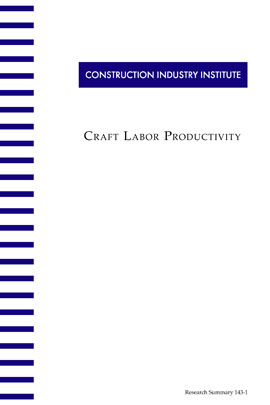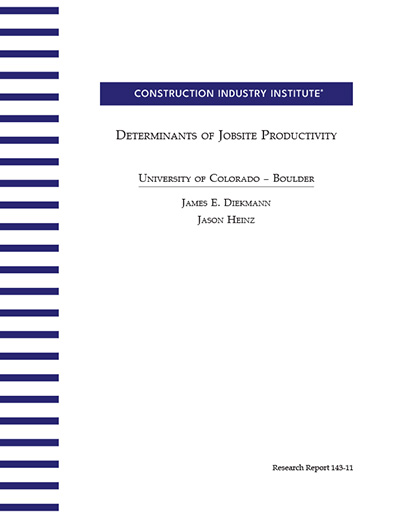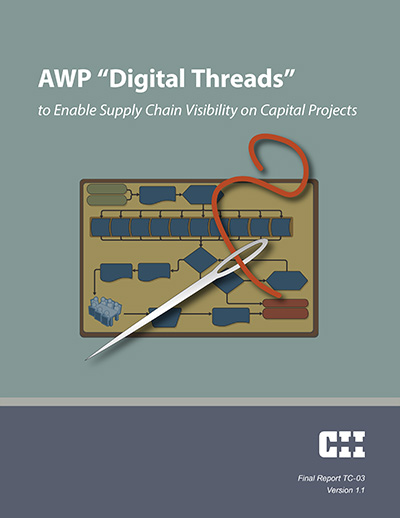
Craft Labor Productivity
Construction craft productivity improvement can be achieved in a multitude of ways. Which are best? Research Team 143 searched for a solution to this complex subject.
This research summary describes a study by CII that compares two strategies for improving construction labor productivity. One strategy, the buffer strategy, stresses the importance of providing large stockpiles (buffers) of design, material, and construction equipment to craft workers. Large buffers provide flexibility to a production system by allowing worker to shift from one task to another when material shortages, design defects, or other impediments are encountered. The second strategy, the production planning strategy, provides effective craft production by ensuring that all necessary productive resources are available for craft workers. The production planning strategy encompasses all jobsite activities that directly support craft labor. Production planning is the domain of project material expeditors, field planners, and field engineers who ensure that craft workers have the materials and information needed for production activities. Production planning is the bridge between project planning and actual construction work.
Most construction firms use both strategies on their jobsites. However, increased use of buffers (e.g., larger stockpiles of materials, design and equipment) reduces the need to plan production in detail by introducing flexibility into the production system. Conversely, precise production planning reduces the need for large buffers by ensuring that the correct materials, designs, and equipment are available for craft workers.
This publication offers readers a chance to compare these two strategies for productivity improvement. Both techniques have advantages and disadvantages. The ultimate goal is to choose the strategy that improves craft productivity and leads to successful project planning, execution, and start-up.



